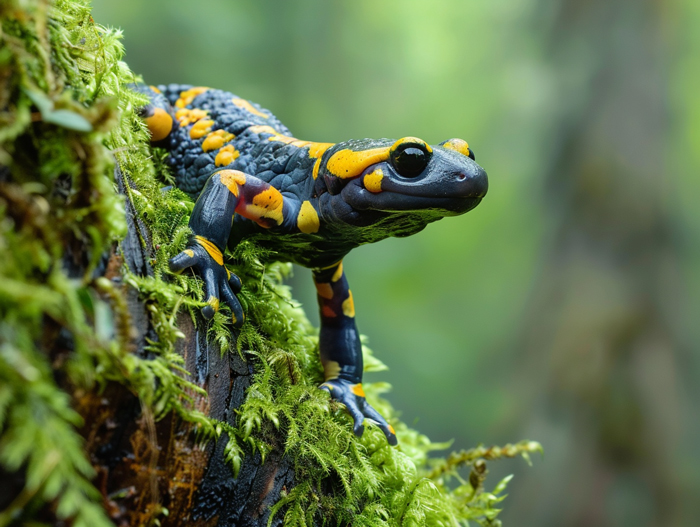Are you curious about whether salamanders change colors? These fascinating amphibians are known for their ability to blend in with their surroundings. But do they actually change colors, or is it just an illusion? In this text, you’ll uncover the truth behind the color-changing abilities of salamanders.
It’s not just chameleons that have the remarkable ability to change colors. Salamanders also possess this unique trait, albeit in a slightly different way. Understanding how and why salamanders change colors can provide valuable insights into their behavior and survival strategies in the wild.
Join us as we investigate into the world of salamanders and explore the science behind their color-changing abilities. Discover the secrets of these captivating creatures and gain a deeper appreciation for the wonders of nature.
Key Takeaways
- Salamanders, like chameleons, have the ability to change colors through specialized cells called chromatophores.
- Color changes in salamanders serve purposes such as camouflaging from predators, adapting to environmental factors, and communicating emotions or territorial signals.
- Factors like temperature, light, habitat, neurological signals, and hormonal regulation influence the color change process in salamanders.
- Salamanders exhibit different types of color changes for camouflage adaptations and social signaling, showcasing their remarkable adaptive abilities and communication strategies.
The Ability of Salamanders to Change Colors

Salamanders, like chameleons, possess the remarkable ability to change colors. This phenomenon, called chromatophores, allows them to blend in seamlessly with their surroundings or communicate with other salamanders. Here’s a closer look at how and why salamanders exhibit this fascinating trait:
- Chromatophores: These specialized cells contain pigment and expand or contract to alter the color of the salamander’s skin.
- Environmental Adaptation: Salamanders change colors as a response to environmental factors such as light, temperature, and humidity, aiding in camouflaging from predators.
- Emotional Display: Color changes can also reflect the salamander’s mood or territorial signals during interactions with other members of their species.
Understanding the mechanism behind salamanders’ color-changing abilities provides valuable insights into their behavior and survival strategies. It’s a testament to the incredible adaptability of these creatures in their natural habitats.
Factors Influencing Color Change in Salamanders

Environmental Factors
- Temperature: Salamanders adjust skin color to regulate body temperature.
- Light: Brightness levels influence color change for camouflage or signaling.
- Habitat: Adapting to surroundings helps blend in or stand out for survival.
- Chromatophores: Specialized cells containing pigment enable color alterations.
- Neurological Signals: Brain signals control chromatophores for color shifts.
- Hormonal Regulation: Hormones influence color change responses in salamanders.
By considering these environmental and physiological factors, you can better understand the intricacies of color change in salamanders.
Types of Color Changes in Salamanders

Camouflage Adaptations
- Salamanders use camouflage to blend into their surroundings.
- They can change color rapidly to match their environment and avoid predators.
- Environmental cues like temperature and light influence their camouflage transformations.
- Salamanders also change color for Social Signaling purposes.
- Bright colors may indicate mating readiness or serve as a warning to predators.
- Neurological signals and hormonal regulation play a key role in these color shifts.
Understanding these different types of color changes in salamanders provides insights into their remarkable adaptive abilities and communication strategies.
Conclusion
Salamanders’ color-changing abilities serve vital purposes in their survival and communication within their environment. Rapid adjustments for camouflage and social signaling demonstrate their remarkable adaptability and complex communication strategies. Environmental cues like temperature and light play key roles in triggering these transformations, showcasing the intricate mechanisms behind their color shifts. By blending into their surroundings for protection against predators and using bright colors for mating readiness and predator warnings, salamanders exhibit a fascinating display of evolutionary traits. Understanding these color changes sheds light on the intricate world of these amphibians and their unique ways of interacting with their surroundings.

Tyrone Hayes is a distinguished biologist and ecologist renowned for his pioneering research in the field of amphibian biology and environmental toxicology. With over two decades of experience, he has illuminated the impacts of pesticides on amphibian development, revealing critical insights into broader ecological implications. Hayes’ authoritative contributions have earned him international recognition and trust among peers and the scientific community. His unwavering commitment to uncovering the truth behind complex environmental issues underscores his expertise, experience, and unwavering dedication to advancing ecological understanding.
